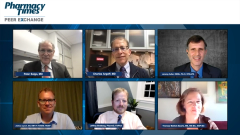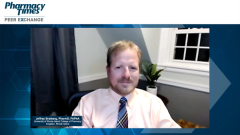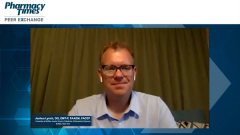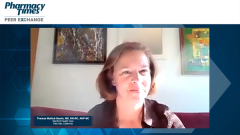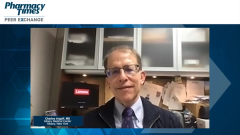
Improving the Accessibility of Naloxone and Potential Impact
Joshua Lynch, DO, EMT-P, FAAEM, FACEP, shares ways to improve naloxone accessibility, and Theresa Mallick-Searle, MS, RN-BC, ANP-BC, discusses stigmatization.
Episodes in this series

Peter Salgo, MD: What do you think the impact of more accessible naloxone is going to be? Let’s put it out there: let’s say that we get buy in, that physicians are prescribing it, the EMRs [electronic medical record systems] are insisting on it, patients who get narcotics are getting naloxone as a prescription and they are having the discussion with their treatment providers. What do you think is the impact of approving the accessibility of naloxone on overdoses and the tolerability of opioid therapy in America?
Joshua Lynch, DO, EMT-P, FAAEM, FACEP: I think there is an indirect impact. The more naloxone that is out in the community, the more likely that folks who are experiencing an overdose will have access to it. I think Dr Adler’s point is also important in the sense that, when should we should not talk about it? I think it is pretty clear that in the cases that have nothing to do with all of the things we have already talked about—which there are not many left—maybe those are the cases where naloxone is not recommended.
We should be looking at novel ways to increase accessibility to and increase the likelihood that naloxone is going to be removed from the Pyxis [medication dispensing system] or taken off the shelf, and be put in the hands in somebody who needs it or left at a location where somebody had an overdose in the past. The more that that occurs, the more likely it is that someone can be rescued from an overdose.
We have done a few things in the greater emergency departments across the country. We do not rely on someone writing a prescription. We have naloxone from the Department of Health sitting right in the emergency department. If somebody comes in and is experiencing withdrawal, if a patient comes in after an overdose, or when they have a very painful condition that we are treating with opioids, we give them naloxone to take home. There are no questions asked, there is no charge, and not only does the patient get offered naloxone, but anyone who is with them gets offered it. We use the nasal spray or nasal naloxone. We offer it to the patient, their family members, and random friends sitting in the room with them, although visitors are much less frequent lately.
One other circumstance where we noticed a need for naloxone to be offered was at the scene of an overdose. We have created, in many areas—in Albany, [New York,] this is happening as well—an EMS [Emergency Medical Services] leave-behind naloxone program. If there is an overdose at a business, in a bathroom, or at a house, we believe that naloxone needs to be at that location. The EMS agencies that we partner with get naloxone from the Department of Health; they will leave naloxone in an accessible location. They may leave it on the counter, they may leave it at a business with the cashier. Proactive ways to do that need to be expanded and will increase the likelihood that naloxone is where it needs to be.
Peter Salgo, MD: Let me ask you about the stigma here, because I am a little surprised. Naloxone is a great drug; there are virtually no [adverse] effects that I know of, yet it seems to be that there is a stigma to leaving naloxone behind. No one is objecting to having EpiPens [epinephrine autoinjectors] everywhere. It occurs to me that there are far more people at risk for narcotic opioid overdoses than there are for anaphylaxis in the environment. EpiPens are everywhere in public schools, and they are far more dangerous than naloxone. What is going on here?
Theresa Mallick-Searle, MS, RN-BC, ANP-BC: There is a great deal of stigma with opiates in general. I think we are in a period right now where, if you are someone who is on chronic opiates, you are looked at as if you are some kind of failure. It is like being on antidepressants because you have a mental health condition. Then, if you are starting to talk to patients openly about the use of naloxone, there is that fear that they are either going to have their opiates taken away from them, or there is something wrong with them where they cannot control their use of opioids, so they’re going to need naloxone.
Again, it is going to take a big public health effort to normalize this. Joshua was talking about what they’ve got going on in Albany, which is amazing. That is amazing and I would love to start seeing studies coming out on the decrease of opiate-related deaths because of that program and similar endeavors.
Peter Salgo, MD: When preparing these broadcasts, sometimes I come upon stuff that is absolutely astounding to me. I was not aware that naloxone is available in most major pharmacies without a prescription. I had always believed it to be a prescription drug. If I do not know, and I am prescribing—I do not prescribe outpatient narcotics, but I use narcotics in the operating room—how do we expect patients to know this? Are many physicians as unaware as I was that this is true?
Jeffrey Bratberg, PharmD, FAPhA: I do not think physicians are unaware. We were one of the first states to implement such a program. In Rhode Island, in 2013, we created standing orders so that there are trained pharmacists available to educate people on their risk of overdose, and how to reduce their risk. Caregivers could get it. Since then, we have required that insurance pays for it. We are one of the only states to do that. We track it. We have gotten grants to distribute it. We go beyond leave-behind at the scene; we go to the neighborhood where the overdose occurred, educate the family, refer people to treatment, and give them social work care. We are doing all of that and yet, 2020 had the highest number of overdose fatalities in Rhode Island ever, with almost 400 overdoses recorded, even though we saw successes. People ask me, how much naloxone should we have out? I think, to answer Dr Adler’s question, the only person who does not need naloxone is the person who already has it.
Transcript edited for clarity.
Newsletter
Stay informed on drug updates, treatment guidelines, and pharmacy practice trends—subscribe to Pharmacy Times for weekly clinical insights.

